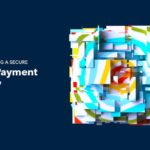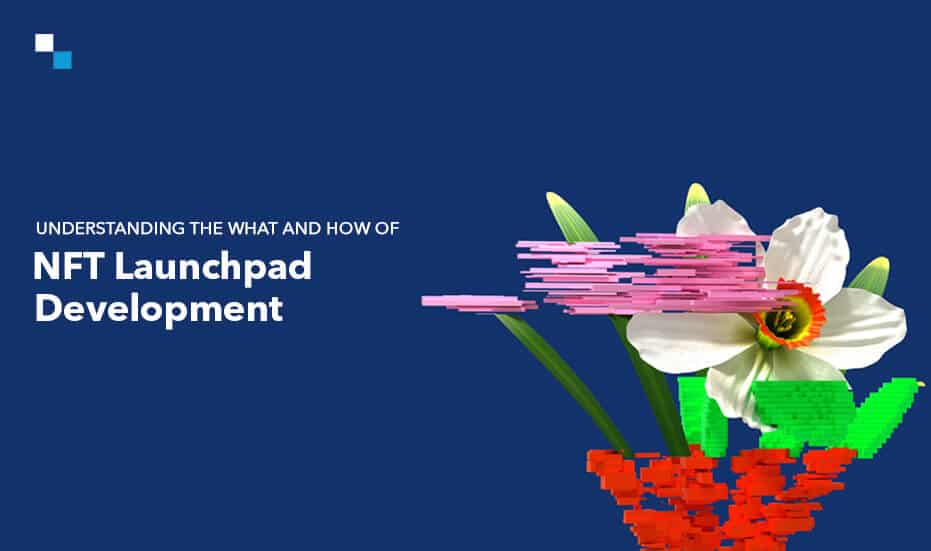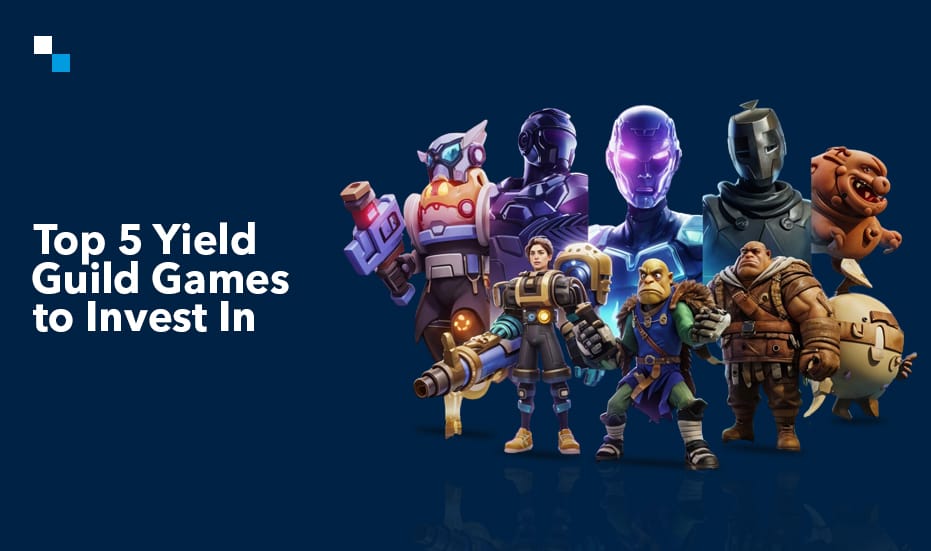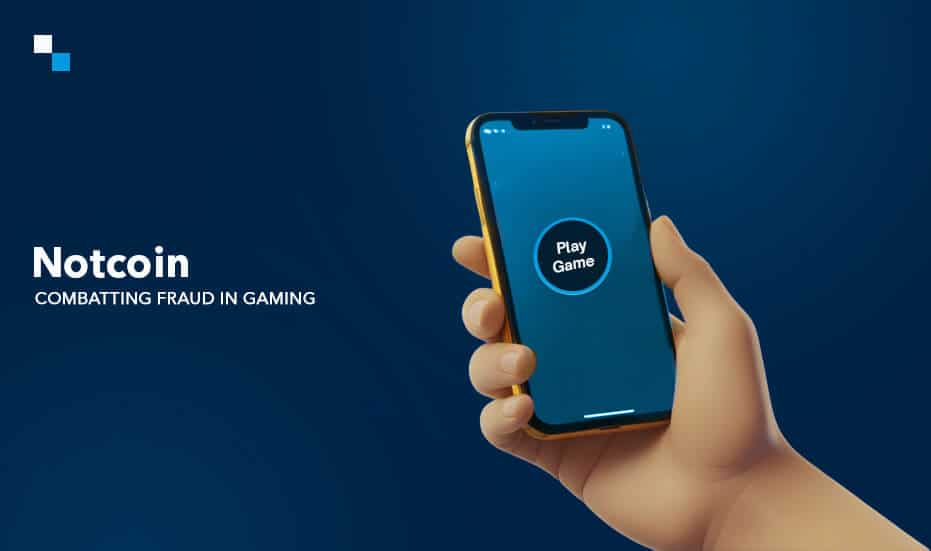
Boosting Decentralized Exchange Software Efficiency: The Role of zk Rollups
March 5, 2024
How Much it Costs to Build a Feature-Rich Crypto Payment Gateway?
March 6, 2024Within the digital assets landscape, non-fungible tokens (NFTs) have emerged as pivotal players, transforming the digital value exchange landscape. These distinctive digital assets span various categories like art, music, and virtual real estate. With escalating NFT demand, businesses are venturing into inventive strategies to capitalize on this thriving market. Among these strategies, the NFT Launchpad stands out as a prominent avenue.
What is an NFT Launchpad?
NFT launchpads serve as cryptocurrency platforms that enable non-fungible token creators to secure early-stage investments for their projects. Essentially, NFT launchpads function as crowdfunding hubs for investing in pre-market NFT projects. Additionally, they facilitate the minting and storage of NFTs. Notably, leveraging these platforms for NFT minting proves more cost-effective compared to utilizing smart contracts and traditional NFT marketplaces.
Given the growing popularity of NFT launchpad platforms, businesses are investing in NFT launchpad development to unlock new revenue streams.
How to build an NFT Launchpad?
The following steps navigate your NFT launchpad development journey:
1. Conceptualize the Project
Begin your NFT launchpad development journey by outlining the project’s core objectives, design specifications, features, integrations, revenue models, and more. Clear articulation of these elements enables your developers to translate your vision effectively.
Moreover, opting for a defined niche enhances project focus. This strategic approach narrows the target audience, enabling customized design and marketing strategies that enhance project efficiency and cost-effectiveness.
Some popular niches that can be considered include music, sport, art, entertainment, gaming, and content.
2. Draft Technical Documentation
In the second phase of NFT launchpad development, you and your technical collaborator craft a Software Requirements Specification (SRS). This document serves as the foundation for the agreement between you and the developer, outlining the functionality and appearance of the product.
The SRS encompasses design, usability, functionality, efficiency, and product attributes or constraints. Typically, your chosen development team compiles this technical documentation based on your input. Key tasks include defining user roles (administrator, investor, author), outlining product implementation methods, structuring user flows within the NFT launchpad, designing the user interface, specifying primary and secondary functions, and establishing the launchpad’s architecture.
Subsequently, your NFT launchpad development company devises a development roadmap, estimating timelines and budgets based on this data. It is common practice to prioritize creating a Minimum Viable Product (MVP) initially to swiftly enter the market and assess the potential of the project. Successful MVP launches pave the way for enhancements and feature additions.
3. Prototype the Platform
The prototype must be user-friendly and clean, and it should have a self-explanatory interface to captivate users instantly.
The prototyping process typically involves three stages:
- Draft: The draft is initiated with a basic sketch outlining the user interface design’s key elements, including platform logic, screen count, and interactions.
- Wireframe: Wireframe includes creating detailed high-fidelity sketches, presenting various interface possibilities such as navigation, color schemes, functions, and element layouts. These wireframes offer visual options for the client to select their preferred format.
- Clickable Prototype: This stage of NFT launchpad development involves developing an interactive user interface design mirroring the end-user experience. It incorporates buttons, animations, videos, screen transitions, and more, providing a comprehensive preview of the interface without functional integration.
4. Finalize UX/UI Design
Following the prototype stage, UX/UI designers leverage the prototype to craft each section of the NFT launchpad. The outcome includes:
- UX wireframe detailing the NFT launchpad structure.
- Interface designs tailored for iOS and Android applications.
- A design prototype showcasing the forthcoming product’s visual aesthetics.
Develop Your Own NFT Launchpad
[widget id=”custom_html-3″]
5. Application Development
During this phase, the experts of your chosen NFT launchpad development company translate the project’s functionality and design into software code, encompassing backend, front-end, mobile app, cryptocurrency wallet app, and smart contracts.
Below are the technology stacks for the NFT launchpad backend and frontend:
Backend Technology Stack:
- Smart Contracts: Ethereum Virtual Machine or BSC
- SQL Database: MySQL, PostgreSQL, MariaDB, MS SQL, Oracle
- DevOps: GitLab CI, TeamCity, GoCD Jenkins, AWS CodeBuild, Terraform
- NoSQL Database: MongoDB, Cassandra, DynamoDB
- Search Engine: Apache Solr, Elasticsearch
- Programming Languages: Java, PHP, Python
- Frameworks: Spring, Symfony, Flask
- Cache: Redis, Memcached
Frontend Technology Stack:
- Web Programming Languages: Angular.JS, React.JS, Vue.JS
- App Programming Languages: Java, Kotlin for Android; Swift for iOS
- Architecture: MVVM for Android; MVC, MVP, MVVM, VIPER for iOS
- IDE: Android Studio for Android; Xcode for iOS
- SDK: Android SDK for Android; iOS SDK for iOS
6. Product Testing
Upon the coding, QA specialists assume responsibility for scrutinizing the software for defects and glitches. They conduct comprehensive tests to evaluate functionality, compatibility, performance, usability, security, and working of the NFT launchpad under various conditions like slow internet connectivity.
7. Launch the Platform
Upon the completion of NFT launchpad development and rigorous testing, the finalized product is deployed either in the cloud or on local servers. The platform is then integrated into diverse listings.
Features of an NFT Launchpad
- Showcase
NFT launchpads necessitate a showcase platform to exhibit the offerings of creators. This showcase includes the project title, a concise description, category (e.g., games, art, music), and status (active, completed, upcoming). Additionally, it commonly features an image of the NFT for visual representation. - Project Profile
For investors seeking detailed insights into an NFT, they refer to the project profile containing a comprehensive description. This includes participation requirements, the project roadmap, and a list of NFTs allocated to lottery winners. Additionally, essential contact information for the startup organization is provided within this profile of the NFT launchpad. - Project Creation
Within this feature, users can submit applications to list their offerings along with descriptions. Ideally, the process should be streamlined, user-friendly, and automated to ensure swift and effortless token listing. - NFT Project Auditing
This function primarily involves reviewing and approving the applications of creators for item listing. It is beneficial to have a checklist and detailed guidelines for auditors to follow during the inspection process. - Funding Options
NFT creators have the flexibility to select funding types such as Initial DEX Offering (IDO), Initial Coin Offering (ICO), Initial Exchange Offering (IEO), Initial Game Offering (IGO), etc. Additionally, creators can specify lottery types and implement features for creating an investor whitelist. This functionality includes defining collaboration terms and adding new investors to the existing list. - Marketing Tools
These tools encompass various functions designed to promote projects, including tags, social media links, banners, and more. When building your NFT launchpad, consider offering both free and premium promotional tools to enhance project visibility. - Cryptocurrency Wallet Integration
Users are required to authenticate via NFT-compatible cryptocurrency wallets like MetaMask, Trust Wallet, Coinbase. On the contrary, you can create your own crypto wallet to enable the transactions. - Payment Methods
The NFT launchpad should integrate with banks and payment systems to enable users to manage both cryptocurrencies and fiat currencies seamlessly. - KYC Verification
Certain NFT launchpads mandate user identity verification before participating in crowd sales to combat fraudulent activities, money laundering, illicit funding, and terrorism. - Native Token
The native token serves as an internal virtual currency for funding NFT crowd sales. These tokens typically have unique tokenomics features, burning mechanisms, and may be listed on cryptocurrency exchanges.
How can Antier help you?
At Antier, we have a team of seasoned blockchain engineers who work together to build enterprise-grade NFT launchpad platforms. Our team follows a coherent roadmap to navigate your NFT launchpad development journey and help you tap into the market with a world-class product.
Owing to our trifecta of deep domain knowledge, rich experience, and expertise, we have positioned ourselves as a trusted NFT launchpad development company.
Connect with our subject matter experts to discuss your business use case.



